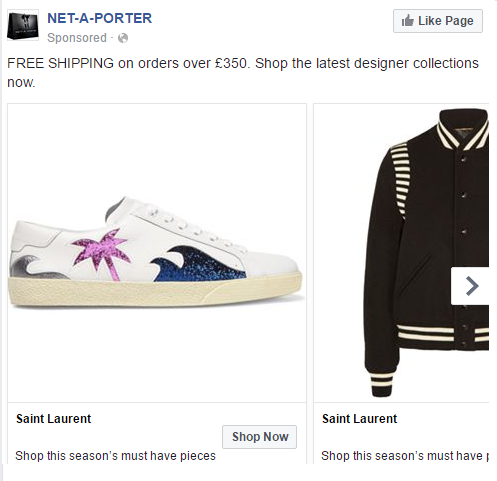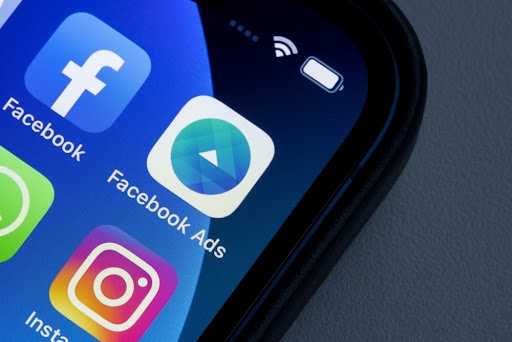The best way to test and improve your Facebook ads is to A/B split test your campaigns, in order to see how your audience engages with your ads. You can then review your data to see what works best.
It’s important to test what really works to ensure you’re getting the best results possible, as there are many variables and components that affect the success of Facebook ads.
This month, Facebook has made it easier to split test your Facebook Ads following their new process in Ads Manager. You may have seen this message:

Read on to discover 5 easy ways to split test Facebook advertising campaigns.
1. A/B split test your ad imagery
According to Sprout Social, images within Facebook ads account for 75-90% of Facebook advertising effectiveness and performance.
I would argue that the image you choose for your Facebook ad is the most important element of the ad. In order for your advert to stand out on a user’s newsfeed, your image needs to pop in order to maximise engagement. As 80% of a standard Facebook ad is taken up by the image, it’s essential that your ads have the best images going, and the only way to know that is to test them.
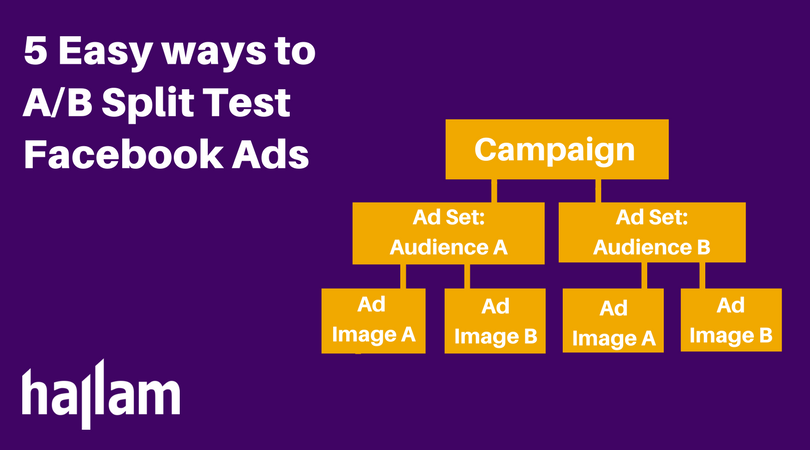
For a recent campaign, I tested product imagery from a client’s warehouse, versus brighter and more engaging lifestyle imagery. I also tested a number of stock images, which were brighter than the clients’ own photography yet still looked on-brand. I then experimented with using images of people, as users can be more receptive to this type of imagery.
Normally I would recommend avoiding stock images at all cost, but if you’re stuck for imagery or are short for time, then stock images that don’t look like stock images can be a saviour.
By testing different product imagery or testing stock imagery, you can measure the following engagement metrics within Facebook Ad Manager, including post reactions, comments, likes, shares and clicks.
2. A/B split test your target audience
By A/B split testing your audiences, you can see which audiences are engaged with your brand, products or services.
Currently, Facebook allows us to target users by location, age, gender, interest, behaviours, custom audiences and remarketing. There are lots to chose from! Here is an example of audience targeting options for personal trainers or fitness companies:
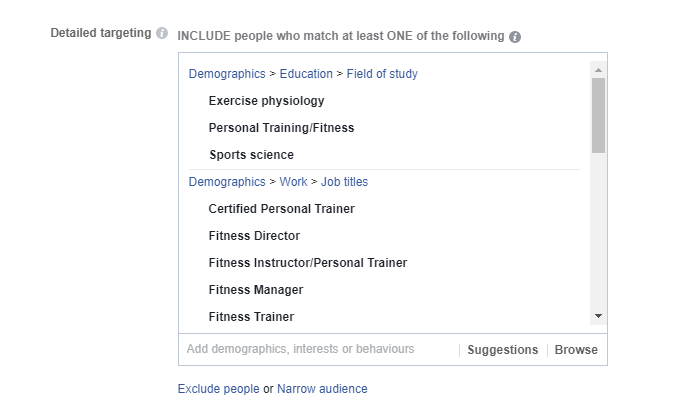
However, if you create one campaign with a broad range of audience interests and behaviours, you won’t know who is really engaged in your campaign. This is why splitting out your audiences by interests, audience lists and/or remarketing can help you to create more specific ad campaigns.
By split testing your audiences, you may learn that different audiences are interested in different products or services. This will then mean that you can create more relevant ads for each audience by testing imagery, call to actions and advert copy too.
When reviewing which audience is more engaged, refer to the Facebook relevancy score metric under Ad Sets in Facebook Ads Manager. This score is out of 10, and a 7 or above indicates that your audience are engaged with your advert.
Other engagement metrics such as reach, reactions, comments, clicks and shares are also very relevant here, in order for you to understand which audiences are most engaged with your brand.
3. A/B split test your ad copy
Testing your copy is key when developing Facebook advertising campaigns. After your image, this is the most important part of a Facebook ad.
When creating copy for your Facebook ads, I recommend keeping the copy short, and always including a call-to-action to increase your conversion rate. I recommend split testing the CTAs you use within the copy too.
A/B split test copy example:
- We have an exciting new range of blue wedgits in store this month, be the first to shop the range now.
- We have an exciting new range of blue wedgits in store this month, browse online now and enjoy free delivery over £30.
Different audiences are receptive to different language and incentives. For example, when curating advert copy aimed at over 50s, we may use different language than when targeting under 25s. It’s important to understand who your audience is and what language they are responsive to. I recommend testing your advert copy to nail down your marketing messages to understand what works for your target audience.
I also recommend bearing in mind which stage of the customer journey the user is at. This is because when curating Facebook ads to users who do not know your brand, we need to use slightly different language and marketing messages to those who do know your brand. This is because users who know your brand understand what you do and your USPs, so your tone can be more direct.
When testing your advert copy, refer to engagement metrics, such as reactions, comments, likes, shares and clicks.
4. A/B split test your advert type
Facebook provides a number of options for advert types: to see which works best for your audience and marketing objectives, you can test two different ad types against each other.
I regularly test two different ad types, and compare image ads to carousel ads (which allow you to include up to 8 images).
For example:
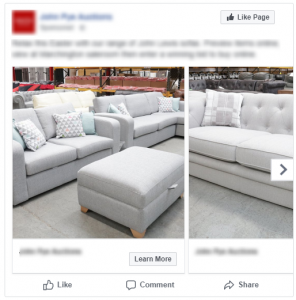

Depending on the marketing objective of your campaign, the results can be surprising. Again, photography is key here – if you have great product imagery to show off, then carousel ads can be great. Yet, if you only have larger lifestyle imagery, these can work well too. The key is to test which is more receptive to your audience.
When testing your advert copy, refer to engagement metrics, such as clicks, reactions, comments, likes, shares, and clicks.
5. A/B split test call-to-actions
Facebook offers a range of call-to-action buttons to test when carrying out advertising. Test which works best for your audience, and whether the call to action is appropriate for the audience and the stage of the customer journey the user is at. It may seem pushy and overly salesy to use “shop now” to users who have no idea about your brand or business.
Try testing different CTAs such as “shop now” against the more softer language of “learn more”. This way, you can see which phrasing best elicits action from your audience.
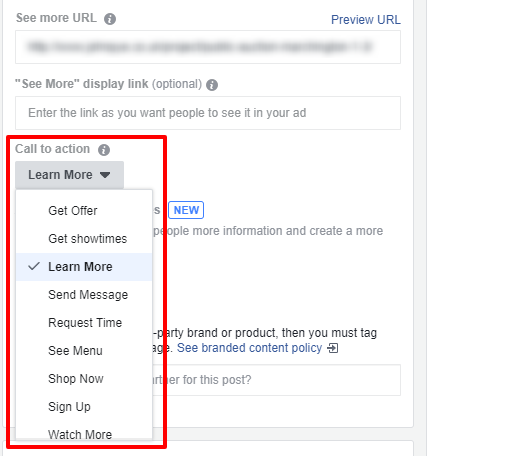
Depending on the call-to-action you choose to test, you will see varying results. For example, the “download” CTA will bring you different results to “sign up.”
The engagement metrics will still be important when measuring success, to understand if your audience is receptive to your advert. I would also review the conversion rate of your ads and website revenue by tagging your campaigns with UTM tags to measure success in Google Analytics.
Measuring success in Google Analytics
When measuring website goal completions or revenue tracking in Google Analytics, make sure that you have added UTM tags to your campaigns so that you can measure the success of each A/B split test campaign that you carry out.
When creating your ad within Facebook Ads Manager you will see this tracking section. Here you will need to input the source, medium, and campaign in order to measure the success of each campaign in Google Analytics.
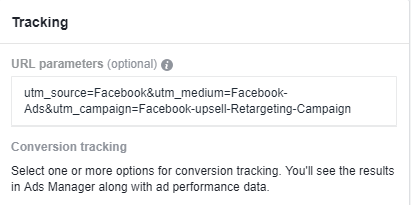
Tips for A/B split testing
When split testing your ads, ensure that you are only changing one variable at a time. This way you can have a clear understanding of what worked well.
Additionally, when testing your campaigns, you want to give them a sufficient amount of time to run. Between 3-5 days should provide you with clear results.
To conclude
By carrying out A/B split testing, you can improve the engagement rates and results of your Facebook ads. By testing different images, ad types, CTAs and more, you will be able to understand what your audience is more receptive to, and create ads that they prefer to see. Find out more about split testing from Facebook’s A/B split testing guide here. Alternatively, for help with social media, get in touch with us today.


